Energy Efficiency in Utilities
Highlights
Scroll down for the full set of indicators.

Cost-Effective Programs
Energy efficiency can be considered a highly cost-effective utility resource. The ratio of lifetime costs to energy production is often cheaper than for nuclear, coal, natural gas, and in many cases for wind and solar energy generation.

Primary Energy Provider
Electricity and natural gas utilities are the primary energy provider for most consumers in residential, commercial, and industrial sectors. In this role, utilities, especially where incentivized by decoupling, incentives, or energy efficiency resource standards, have managed energy efficiency programs for consumers that have resulted in some of the largest savings of any subnational energy efficiency policy tool.

Tripling Savings
Since 2006, spending on and savings from electricity efficiency programs have more than tripled. Since 2011, spending on natural gas efficiency programs has increased by 28% while their energy savings have nearly doubled.

Advanced Metering
One enabler of a more flexible and responsive grid is the rapid deployment of advanced metering infrastructure. Smart meter installations, which were an emerging technology in 2008, have reached more than 60% of the installed meter base today.

Demand Response Programs
Demand response programs contributed 10.4 GW in peak demand savings in 2020. These savings were primarily driven by the industrial sector, but the residential and commercial sectors have enormous potential for growth.
12
Energy Efficiency is a Low-Cost Resource
Energy efficiency is a cost-effective, reliable, zero-carbon resource
Sources: ACEEE (2021); Lazard (2021)
Source: LBNL (2021)
DETAILS
Energy efficiency allows utilities to meet state energy or emissions reduction requirements, as well as reliably meet its customers’ overall electricity demand. Thus, it is informative to consider energy efficiency as an energy resource: one that is distributed, zero-carbon, and often the most affordable option to satisfy energy needs relative to other generation technologies, even compared with wind and utility-scale solar.
Utilities and other program administrators develop and implement a diverse portfolio of programs that help different customers and sectors save energy using a variety of strategies. The cost-effectiveness of different programs can be quantified through several approaches, including by dividing the expenses by the number of kilowatt-hours saved for a levelized cost of saved electricity. The levelized costs shown above include only the program administrator costs, not any additional costs paid by customers.
Lawrence Berkeley National Laboratory considered the levelized program administrator cost of saved electricity for a variety of utility ratepayer-funded efficiency program types in 2018, finding that costs ranged from residential lighting rebate programs (1.2 cents/kWh) to HVAC retrofits (8.6 cents/kWh). 1
13
Utility Programs Spending and Savings
Utility investments in energy efficiency have grown, achieving 14% more electricity savings and 89% more gas savings in 2021 than in 2011
Source: ACEEE (2022), The State Energy Efficiency Scorecard
Source: ACEEE (2022), The State Energy Efficiency Scorecard
DETAILS
Electric and natural gas utilities, as the main providers of energy for households and businesses, invest significant resources in programs that boost energy efficiency. Though overall savings and spending have increased since 2011, investments in utility energy efficiency programs have plateaued since 2017.
In 2020, utility energy efficiency programs faced obstacles due to the pandemic. Despite these challenges, many utilities adapted by developing remote energy assessments and other virtual work. Though some utility energy efficiency programs have returned to full capacity since the beginning of the pandemic, the industry still faces systemic challenges. Savings opportunities from lighting, often the lowest cost measures, have been reduced as LED bulbs become the norm, meaning utilities face new challenges in continuing to grow cost-effective residential energy efficiency portfolios.
14
Energy Efficiency Resource Standards
The majority of states are implementing energy efficiency resource standards and have seen 4x energy savings
State Energy Efficiency Resource Standards (EERS)
December 2020
| Approximate Average Annual Electric Savings Targets | |||
| Massachusetts | 2.70% | Virginia | 1.20% |
| Illinois | 2.00% | Connecticut | 1.10% |
| New York* | 2.00% | Nevada | 1.10% |
| Rhode Island | 2.00% | Maine* | 1.00% |
| Colorado | 1.70% | Michigan | 1.00% |
| Vermont | 1.70% | New Mexico | 1.00% |
| Maryland* | 1.60% | Iowa* | 0.90% |
| New Jersey | 1.60% | District of Columbia | 0.80% |
| California* | 1.50% | Washington* | 0.70% |
| Hawaii | 1.40% | Wisconsin | 0.70% |
| Minnesota* | 1.40% | Pennsylvania | 0.60% |
| Arkansas | 1.20% | Texas | 0.20% |
| Oregon* | 1.20% | North Carolina | Combined EERS/RPS |
*For states reporting electric savings on a gross basis, a net-to-gross adjustment was applied to make them comparable with states reporting net savings. States with voluntary targets are not listed in this table. Targets in states with cost caps reflect the most recent approved savings levels under budget constraints.
Source: ACEEE (2022), The State Energy Efficiency Scorecard
DETAILS
An energy efficiency resource standard (EERS) is a state-level energy efficiency mandate, similar to a renewable portfolio standard (RPS), that requires an electric and/or natural gas utility to achieve a targeted level of energy savings from energy efficiency measures. As of 2021, 26 states have EERS policies in place. In 2017, states with EERS saved on average more than four times as much electricity as those that did not have targets (1.3% of retail sales compared to 0.3%). 2
The strongest EERS requirements are in Massachusetts, which requires more than 2.5% new savings annually. 3 Massachusetts, Rhode Island, and Vermont make up the top three states for most utility investment in energy efficiency programs. 4
In recent years, some states have taken a few steps backward. In 2021, New Hampshire’s public utility commission removed the requirement for the state’s utilities to pursue all cost-effective energy efficiency, effectively removing the EERS. 5 In 2022, Arizona’s Corporation Commission rejected rules that would have extended the state’s EERS. The previous EERS was estimated to have saved ratepayers nearly $1.4 billion and help avoid the build out of gas combustion turbines. 6
15
Utility Programs Spending and Savings Per Capita
States that invest in utility energy efficiency programs save more for customers
Source: ACEEE (2022), Census (2021)
Source: ACEEE (2022), Census (2021)
DETAILS
While different states have different efficiency opportunities depending on their climate, geography, and economy, there is a clear trend that states incentivizing energy efficiency by EERS or other policies typically realize the greatest benefits from utility (ratepayer-funded) energy efficiency programs.7
Comparing each U.S. state’s annual per capita spending on efficiency programs (including residential, commercial, and industrial programs) and the per capita incremental energy efficiency savings provides a measure of each state’s utility efficiency program impact regardless of the state’s size.
On this basis, those with an EERS stand out. Maryland, Illinois, Massachusetts, Vermont, Michigan, and Minnesota, as well as Washington, D.C., all dedicate significant investment to efficiency programs and experience the highest per capita savings. However, note that energy savings are self-reported and may not be comparable. Some states also include spending on efficiency of non-regulated fuels such as propane under electricity spending, but include the fuel savings under natural gas.
16
Decoupling and Shareholder Incentives
Decoupling and shareholder incentives encourage utilities to implement energy efficiency
2021: States with Decoupling or LRAM for Electricity and/or Natural Gas
Source: ACEEE (2022), The State Energy Efficiency Scorecard
2021: States with Performance Incentives for Electricity and/or Natural Gas
Source: ACEEE (2022), The State Energy Efficiency Scorecard
DETAILS
Traditional utility regulation has tied (“coupled”) utility sales to profits: i.e., more sales results in more profits.8 This is a direct disincentive to energy efficiency, and it can be corrected with specific policies, such as Decoupling and the Lost Revenue Adjustment Mechanism (LRAM).
Performance incentives can complement those strategies by rewarding savings from energy efficiency programs. Of the top 10 states for electricity savings, nine deploy at least one of these strategies to incentivize energy efficiency – decoupling, LRAM, or performance incentives – and eight use performance incentives in concert with a decoupling or LRAM strategy. 9
17
Smart Meters
Smart meter installations have surpassed 60% of the installed meter base
Source: FERC (2020), 2020 Assessment of Demand Response and Advanced Metering
DETAILS
Electricity generation presents varying costs, both financial and in terms of emissions, that depend on the time of day, weather, and other factors, such as a downed power plant or disrupted power lines. However, most consumers pay flat rates for electricity, insulating them from these challenges that result from high-demand periods and disincentivizing energy-efficient behaviors that could help stabilize the grid.
Grid modernization technologies that enhance the responsiveness of the grid and enable greater communication between consumers and utilities are evolving rapidly, and utilities are preparing for the increasing role that they may play in their operations. One such example is in advanced metering infrastructure (AMI).
Such technology is the foundation for a more responsive energy system, allowing customers to alter their energy use to reflect grid conditions, and generating data that would allow energy efficiency program implementers to better design energy efficiency programs including demand response, measurement and verification, and peak hour savings.10 While one component of this system – smart meters – was uncommon before 2008, they have grown rapidly in the last decade, now surpassing 60% of the total installed stock of meters in 2019.
18
Demand Response
Although the industrial sector made up only 0.3% of demand response participants by number, it was responsible for 46% of peak demand savings in 2020
Source: EIA (2020), Monthly Energy Review
Source: EIA (2020), Monthly Energy Review
DETAILS
Demand response is a tool that allows electricity demand to be more flexible, which enhances the energy efficiency and reliability of the grid, responds to unexpected shortages and periods of high peak demand, and supports the greater incorporation of intermittent renewables.
The main entities involved in demand response programs are utilities, end-users, and in many cases, load aggregators, which enable the bundling of demand response capabilities for wholesale and retail markets. In 2020, industrial users were the primary demand response participants. Although the industrial sector made up only 0.3% of demand response participants by number, it was responsible for 46% of peak demand savings in 2020. In contrast, the residential sector accounted for 96.8% of participants in demand response programs and only 34% of peak energy savings.
However, the potential for demand response is likely much higher. A recent study from the Brattle Group estimates that if real-time demand response programs and investments were scaled up significantly, they could potentially provide 200 GW of load flexibility and approximately 20% of forecasted U.S. peak load in 2030, saving more than $15 billion a year in avoided system costs. 11
19
Energy Efficiency and Losses in Power Systems
Since 2002, the heat rates at fossil-fueled plants have fallen by 14% and power transmission and distribution losses fell by 9%
Source: EIA (2022), Annual Energy Review
Source: EIA (2022), Monthly Energy Review
DETAILS
While end uses are often the focus of energy efficiency programs, there are massive opportunities for greater energy efficiency in power generation, transmission, and distribution systems. Fossil-fuel power plants produced more than 1.5 trillion kWh in 2021, or 38% of U.S. power generation, and roughly 24% of U.S. greenhouse gas emissions.12, 13 These plants have also made gains in thermal efficiency, as measured by their heat rate, which fell by 14% from 2002 to 2021. 14 Improving the heat rate of a typical 500-MW unit by only 1% can amount to fuel savings 15 of greater than $600,000 annually. 16, 17
Until 2021, transmission and distribution systems had seen significant decreases in electricity losses. Losses, while not entirely avoidable, can be costly. In 2021, U.S. losses were estimated at 225 TWh, about one third of the net generation in the state of California in that same year.18 From 1990 through 2002, the U.S. experienced losses of roughly 7%. However, from 2002-2017, losses fell to roughly 5%. While the U.S. electric transmission and distribution system is now more efficient, some countries have achieved lower levels of losses, including Singapore (2%), Iceland (3%), South Korea (3%), and Germany (4%).19
Footnotes
- LBNL (2021), Still the One: Efficiency Remains a Cost-Effective Electricity Resource
- ACEEE (2019), State Energy Efficiency Resource Standards (EERS) May 2019
- ACEEE (2022), 2022 State Energy Efficiency Scorecard
- ACEEE (2022)
- Utility Dive, Advocates vow to fight ‘outrageous’ decision
- Solar Builder, Arizona Regulators Reject Their Clean Energy Rules at Last Second
- States with electric energy efficiency resource standards are highlighted in green on the scatter plot. State-level total spending and savings data are self-reported and may include differences in methodology. Energy efficiency programs also apply to different combinations of residential, commercial, or industrial customers, such that the kWh savings per capita is not intended as a measure of residential energy efficiency savings but a generalized measure of energy efficiency benefits.
- Under traditional regulation, utilities may have an incentive to increase sales between rate cases.
- Top 10 states for absolute electricity savings: CA, IL, NY, MI, MD, MN, MA, TX, PA, AZ. Pennsylvania is the only state in this list that does not have decoupling, LRAM, or performance incentives.
- Todd, A., Perry, M., Smith, B., Sullivan, M., Cappers, P., Goldman, C. (2014), Insights from Smart Meters: The Potential for Peak-Hour Savings from Behavior-Based Programs. LBNL.
- The Brattle Group (2019), The National Potential for Load Flexibility
- EIA (2018), What is U.S. electricity generation by energy source?
- EPA (2018), Greenhouse Gas Inventory Data Explorer
- EIA (2019), Monthly Energy Review
-
The cost of fuel is 60-80% of the overall cost of producing electricity.
- EPRI (2019), 2019 Heat Rate Improvement Conference Proceedings
- EPRI (2016), Sustainability of Heat Rate Improvements
- EIA (2019), Electricity
- The World Bank (2014), Electric power transmission and distribution losses

